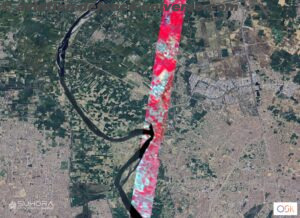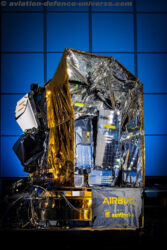New Delhi. 24 November 2022. Condor has selected Inmarsat’s high-speed GX Aviation inflight broadband for its upcoming fleet of Airbus A330-900neo aircraft, with passengers able to enjoy the award-winning service from later this year.
The German leisure carrier is renewing its long-haul fleet with 18 Airbus A330-900neos, all of which will be delivered with GX Aviation as a linefit installation. The aircraft will be operated on Condor’s international route network to the Americas, Africa, the Caribbean and Asia, with the first three Airbus A330-900neos scheduled to enter service by the end of this year and more to follow in early 2023.
Powered by the world’s first and only globally-available broadband network, GX Aviation offers reliable, consistent and high-speed connectivity that meets rising passenger expectations to stay connected, browse the internet, enjoy social media, shop online and more while on a flight. It will enhance Condor’s onboard experience and unlock new ancillary revenue streams for the airline, with passengers able to purchase a connectivity package directly from their personal devices.
Condor’s selection of GX Aviation coincides with soaring demand for inflight connectivity as passengers return to the skies after the COVID-19 pandemic. According to Inmarsat’s 2022 Passenger Experience Survey, which surveyed 11,000 passengers worldwide, 77% said inflight Wi-Fi is important to them when they travel. Wi-Fi allows them to stay connected with friends and family and supports a touch-free environment onboard the aircraft – and 82% said quality Wi-Fi would lead them to rebook with that airline.
Niels Steenstrup, President of Inmarsat Aviation, said “As we have witnessed over the past few months, demand for air travel has continued to increase significantly and with that, passenger expectations around a digital onboard experience have also evolved rapidly. Fast, reliable inflight broadband is now integral to ensuring that airlines stay ahead of the curve in today’s climate and Inmarsat’s new partnership with Condor is testament to the important role that connectivity solutions play in the airline industry’s recovery and growth strategies. Inmarsat looks forward to rolling out GX Aviation on Condor’s Airbus A330-900neo aircraft as part of the airline’s efforts to renew its fleet and enhance its onboard experience.”
Ralf Teckentrup, CEO of Condor, said “As the German launch customer for the Airbus A330neo, Condor is focused on providing a superior passenger experience and cementing our status as a European frontrunner on long-haul flights. A key part of this strategy is the introduction of brand-new Economy, Premium Economy and Business cabins, which offer the highest levels of comfort and feature world-class technology such as Inmarsat’s GX Aviation to ensure passenger expectations for fast, consistent and reliable inflight broadband are met. The Airbus A330neos will become our first connected aircraft and we look forward to offering GX Aviation as standard across our long-haul flights by mid-2024, when our long-haul fleet renewal programme is expected to be completed, marking an important milestone in Condor’s history.”
GX Aviation is powered by Inmarsat’s Global Xpress (GX) satellite network, which currently consists of five Ka-band satellites and will be further enhanced with the addition of seven more satellites as part of Inmarsat’s fully-funded technology roadmap. This includes two Inmarsat-6s, the most sophisticated commercial communications satellites ever built, both of which are scheduled to enter service next year and will be followed by three additional satellites in geostationary orbit – adding speed, capacity and resilience – and two in highly elliptical orbit, enabling the world’s only commercial mobile broadband service for aircraft flying in higher elevations and across the Arctic.
The GX network will also play a crucial role in the ongoing growth of Inmarsat’s unique ORCHESTRA dynamic mesh network, which will bring existing geosynchronous (GEO) satellites together with low earth orbit satellites (LEO) and terrestrial 5G to form an integrated, high-performance solution, unmatched by any existing or planned competitor offering.

























































































































